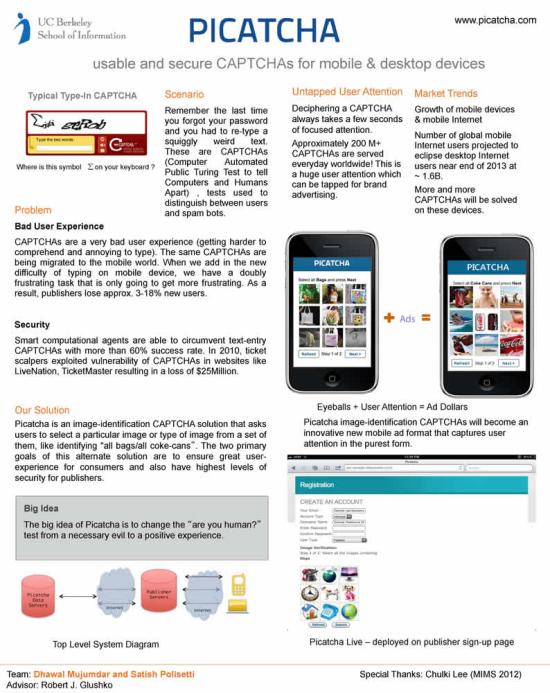Picatcha: An Image Based CAPTCHA
The explosive growth of the Internet has been accompanied by automated services engaging in malicious activities. These services, or bots, use automated scripts to manipulate content on websites, such as blogs, and abuse services, such as webmail. To minimize such abuse, researchers developed a reverse Turing test, or Computer Automated Public Turing test to tell Computers and Humans Apart (CAPTCHA). Most implementations of CAPTCHAs consist of images of words, distorted so that they are legible to humans but unrecognizable even to state-of-the-art character recognition algorithms. Users are prompted to type the letters shown in the image to prove that they are human. Early CAPTCHAs were straightforward and easier to solve. However, with advances in computer vision algorithms bots are increasingly successful in passing these tests. Over the time, CAPTCHAs have become harder even for humans. As text CAPTCHAS generally lead to a frustrating user experience, particularly on mobile devices, CAPTCHAS have evolved to feature tests of image identification. We are exploring whether image based CAPTCHAs can be used for online advertising.










